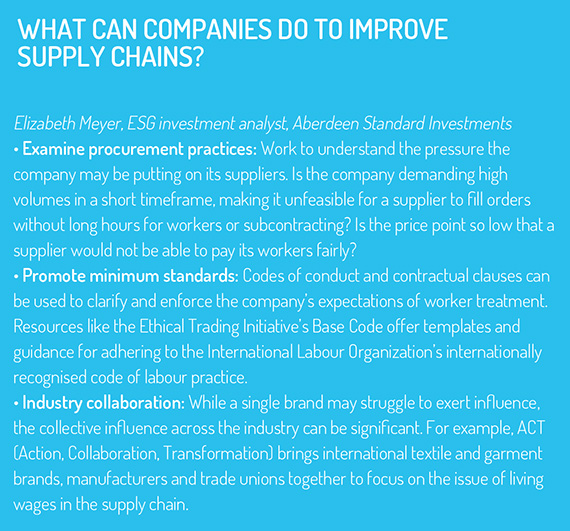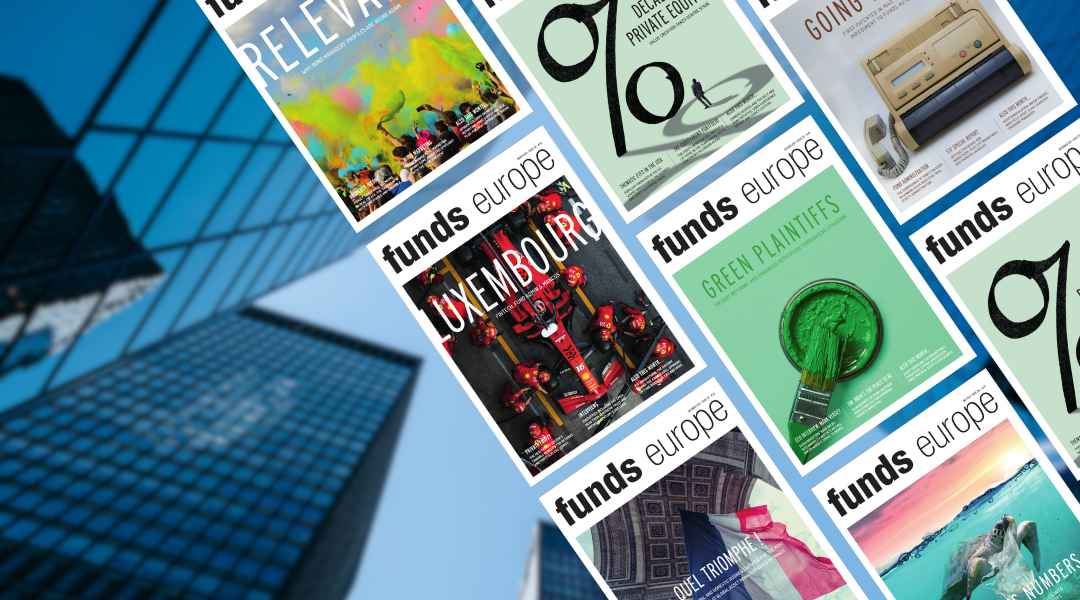 We cannot afford to produce clothes the way we used to, writes Romil Patel.
The price that people are prepared to pay for clothing and footwear depends on a variety of factors – from spending power to personal preferences, consumer conditioning and needs. Yet finite resources such as water and fragile ecosystems, as well as a habitable planet for future generations, are often afterthoughts.
Fashion has long been part of human identity and has changed throughout the ages – from handwoven Banarasi sarees popular with the Mughals to elaborately pleated ruffs in Tudor times, intricately embroidered mantua dresses in the late 1670s and gowns made of silk or satin during the Victorian era.
In his international bestseller Sapiens: A Brief History of Humankind, Yuval Noah Harari notes that “consumerism sees the consumption of ever more products and services as a positive thing. It encourages people to treat themselves, spoil themselves, and even kill themselves slowly by overconsumption.” But how is this pattern of consumption woven into the reality of the existential climate crisis and, more specifically, what does our thirst for fashion have to do with it?
Dye another way
We cannot afford to produce clothes the way we used to, writes Romil Patel.
The price that people are prepared to pay for clothing and footwear depends on a variety of factors – from spending power to personal preferences, consumer conditioning and needs. Yet finite resources such as water and fragile ecosystems, as well as a habitable planet for future generations, are often afterthoughts.
Fashion has long been part of human identity and has changed throughout the ages – from handwoven Banarasi sarees popular with the Mughals to elaborately pleated ruffs in Tudor times, intricately embroidered mantua dresses in the late 1670s and gowns made of silk or satin during the Victorian era.
In his international bestseller Sapiens: A Brief History of Humankind, Yuval Noah Harari notes that “consumerism sees the consumption of ever more products and services as a positive thing. It encourages people to treat themselves, spoil themselves, and even kill themselves slowly by overconsumption.” But how is this pattern of consumption woven into the reality of the existential climate crisis and, more specifically, what does our thirst for fashion have to do with it?
Dye another wayFrom cotton farming to the production of dyes, the fashion industry is resource-intensive, consuming 93 billion cubic metres of water while producing 20% of global wastewater every year, according to the UN’s trade and development body, UNCTAD. With around 8,000 toxic chemicals used to turn raw materials into textiles, the industry is a regular contributor towards toxic chemical waste being released into the air, waterways and land, a special research report by Barclays on sustainable and thematic investing in global fashion notes. The UN’s ‘World Water Development Report 2020’ points out that untreated wastewater is “an important source of GHGs”, adding that between 80% and 90% of wastewater is neither collected nor treated in developing countries. Data from MDS Transmodal in March shows that China, India, Malaysia, Taiwan, Vietnam, South Korea, Bangladesh, Indonesia, Thailand, Pakistan, Cambodia, Australia and Japan are among the top 20 suppliers of fashion goods, which include textile fibres and clothing and accessories. The UN report also acknowledges that the Asia-Pacific region is highly susceptible to climate-induced disasters and extreme weather events, which disproportionately affect poor and vulnerable groups. Increasing water stress also means that businesses and industries that are highly dependent on the resource and resistant to change will face heightened risk as climate change trends progress. “People still struggle to see water as a finite resource, or as a resource that could be priced more aggressively,” says Gabriel Wilson-Otto, head of stewardship for Asia-Pacific at BNP Paribas Asset Management. “The really interesting thing is the interaction between climate change and increasing water scarcity. “One of the best examples of this is that warmer temperatures are melting the Hindu Kush Himalayas (the third pole) – a vital water source to ten major river basins that in turn support 1.8 billion people and over US$4 trillion (€3.9 trillion) of GDP,” he adds. “As annual snowfall and ice formation declines, so does water runoff into major river systems. Agriculture and many industrial processes are very water-intensive. The key question is: how long it will be before water prices increase to reflect increasing scarcity, or governments reprioritise water access and ‘turn off the tap’ for certain industries or locations?” If we zoom out further, the apparel and footwear industry accounts for between 8% and 10% of global greenhouse gas (GHG) emissions each year, exceeding international aviation and shipping combined. But an industry with an extensively integrated supply chain is also inherently reliant on a combination of land, sea and air to transport raw materials and goods. Global fashion is expected to reach $3.3 trillion by 2030 – a 5% compound-annual-growth-rate increase from 2019, research from Boston Consulting Group (BCG) and leadership forum Global Fashion Agenda shows. But at the same time, GHG emissions need to fall by approximately 45% by 2030 if we are to reach net zero emissions by 2050 to have a chance of limiting global warming to 1.5°C above pre-industrial levels by the end of the century. If we are to prize survival and reach net zero emissions by 2050 globally, the current model of the resource-intensive, heavy carbon-emitting and waste-producing fashion industry must change. If it does not, the ‘business as usual’ scenario will use up a quarter of the world’s carbon budget by then. So, how can we reroute ourselves on to a more sustainable path – and what are the long-term investible opportunities for managers seeking to drive change and create impact at scale? A forest for fashion
“It’s about thinking of garments from cradle to grave and closing the loop until you don’t get the key problem of waste,” says Isabella Hervey-Bathurst, a global sector specialist in the equity team at Schroders. “The most damage in terms of the industry is design, raw materials, processing, manufacturing and end of use.” This creates an addressable and investable opportunity to make an impact on a sizeable scale. Sustainable repositioning towards the development and scaling up of disruptive innovation in the form of new materials, processes, technologies and business models presents an annual financing opportunity of $20 billion to $30 billion, according to a study by BCG and the global sustainability initiative Fashion for Good. Tracing materially relevant ESG considerations back to the upstream of the textile industry and comparing different fibres in terms of their sustainability profile is key to mitigating 440,000 tons of supply chain waste creation in the preparation of fibres to make yarn and clothes. “Wood-based cellulosic fibres have a much lower carbon footprint than synthetic fibres, like polyester, but they also have a much lower water footprint than cotton and even organic cotton,” says Hervey-Bathurst. “The reason is that they use wood-based cellulose as their input and process it in a closed-loop system that minimises waste and maximises the re-use of water.
 “Some of the leading players in that industry are also fully vertically integrated, so they own and maintain the forests from which they get the wood-based cellulose, and they replenish that forest. So, it’s the type of full-loop system that you’d be looking for. Those fibres are only 6% of the market today and we think they could be a lot bigger in terms of the share of the fibre market.”
The challenge in the race to decarbonise the fashion industry is that scaling up experimental materials takes time. In 1992, Tencel introduced a sustainable, compostable and biodegradable fibre to the market, known as lyocell. The main raw material for lyocell is cellulose from wood pulp.
“This year, among its biggest users are H&M and Inditex so we can safely assume that it’s made it into the mainstream, but it’s taken them over 25 years to get there, so it’s a very slow process when it comes to new materials in the industry,” says Anushka Challawala, a sustainable and thematic investing analyst at Barclays and co-author of its ‘Global Fashion: Green is the new black’ report.
Catapult the catwalk
“Some of the leading players in that industry are also fully vertically integrated, so they own and maintain the forests from which they get the wood-based cellulose, and they replenish that forest. So, it’s the type of full-loop system that you’d be looking for. Those fibres are only 6% of the market today and we think they could be a lot bigger in terms of the share of the fibre market.”
The challenge in the race to decarbonise the fashion industry is that scaling up experimental materials takes time. In 1992, Tencel introduced a sustainable, compostable and biodegradable fibre to the market, known as lyocell. The main raw material for lyocell is cellulose from wood pulp.
“This year, among its biggest users are H&M and Inditex so we can safely assume that it’s made it into the mainstream, but it’s taken them over 25 years to get there, so it’s a very slow process when it comes to new materials in the industry,” says Anushka Challawala, a sustainable and thematic investing analyst at Barclays and co-author of its ‘Global Fashion: Green is the new black’ report.
Catapult the catwalkAnother addressable waste issue is the vast amount of fabric. Of the 400 billion square metres of textiles produced annually, 15% – or 60 billion square metres – ends up as waste on cutting room floors Technology can help digitalise labour-intensive aspects of fashion, such as design and sampling. “Even the marketing side of things like physical catwalks will become pretty irrelevant going forward,” says Challawala. “Over the next ten years, people will have really adapted to embracing technology in the industry.” Reducing wastage along the production process has a sizeable positive environmental impact, but it also brings new opportunities, from new business models offering recycling solutions to reduce waste to brands that are produced in refugee camps with the use of organic and recycled materials. A key beneficiary of the second-hand clothing market is charity shops, but the industry often struggles when it comes to effectively pricing fashion items. “The average charity shop has an operating margin of 19%, so if they are selling a piece of clothing for £5, they’re getting just under £1 of profit from that, which is mainly to do with upkeep of the shop network,” explains Seb Wallace, a venture investor at Triple Point. Instead, companies such as Thrift+ use technology to offer charity shops a better margin on an absolute basis as it calculates the true price of the clothing and gives a third of the revenue to charity. “What you’re doing is creating a charity shop proposition which is better than a charity shop or e-commerce,” says Wallace. “The key problem for these start-ups is to break the habit of the average consumer. It’s to get them thinking that they should be going second-hand because they can get better value and similar service.” KYC: Know Your Chain
The Covid-19 pandemic has inadvertently served as an intersection for exposing unsustainable environmental, social and governance practices that are endemic in the fashion industry and its extensive supply chain. This includes corporate culture, such as employee treatment and relationships with suppliers. The global public health crisis has exposed poor brand-supplier relationships. Often, a supplier’s entire production capacity can be taken up by one brand, but there is no notice for dropping them, which leaves the supplier in a precarious position. What’s more, a number of brands do not have policies around the length of time within which a supplier must be paid, and this leaves loopholes when it comes to paying for garments that have already been made. Again, this puts the manufacturer – and its employees – in an unwanted position. Brands have many suppliers and sub-suppliers and it comes back to poor traceability in the supply chain, but this is also a governance risk when it comes to managing brand reputation as well as being able to access supply. Diligent supply chain management comes down to auditing, payment to suppliers and workers and treatment of the labour force. “As a best practice, we would like to see companies visiting the supply chain sites and really see for themselves that things are in place and that they have good policies in place,” says Niina Arkko, a responsible investment analyst at Ilmarinen, one of the largest pension insurance companies in Finland. “During the coronavirus, it’s difficult for people to get a living wage if everything is cancelled and companies are not ordering from factories and there’s nothing to deliver. Policies should be in place around how companies are acting when there is a crisis,” says Arkko. “Also, what comes down to an operational risk is related to labour rights and their safety. You should treat your workers in a way that they are willing and able to work for you, so you should have medical care in place. There are many aspects to this topic, but overall the supply chain management is the key thing.” We need to change clothes without spending a quarter of the world’s carbon budget on fashion by 2050, because it is too expensive. © 2020 funds global asia

 At times like these, HSBC Asset Management easily pivots towards emerging markets.
At times like these, HSBC Asset Management easily pivots towards emerging markets. A comprehensive, cost-effective, and transparent currency overlay hedging solution is crucial to mitigate FX exposure risks in the complex landscapes of Japan and China's FX markets, explains Hans Jacob Feder, PhD, global head of FX services at MUFG Investor Services.
A comprehensive, cost-effective, and transparent currency overlay hedging solution is crucial to mitigate FX exposure risks in the complex landscapes of Japan and China's FX markets, explains Hans Jacob Feder, PhD, global head of FX services at MUFG Investor Services. The world is transitioning from an era of commodity abundance to one of undersupply. Ben Ross and Tyler Rosenlicht of Cohen & Steers believe this shift may result in significant returns for commodities and resource producers over the next decade.
The world is transitioning from an era of commodity abundance to one of undersupply. Ben Ross and Tyler Rosenlicht of Cohen & Steers believe this shift may result in significant returns for commodities and resource producers over the next decade. Ross Dilkes, fixed income portfolio manager at Wellington Management, examines the opportunities and risks for bond investors presented by the region’s decarbonisation agenda.
Ross Dilkes, fixed income portfolio manager at Wellington Management, examines the opportunities and risks for bond investors presented by the region’s decarbonisation agenda. Shareholders in Japan no longer accept below-par corporate governance standards. Changes are taking place, but there are still areas for improvement, says Tetsuro Takase at SuMi Trust.
Shareholders in Japan no longer accept below-par corporate governance standards. Changes are taking place, but there are still areas for improvement, says Tetsuro Takase at SuMi Trust. Robert St Clair, head of investment strategy at Fullerton Fund Management, explores the reasons investors should be paying attention to the rising demand for healthcare in China.
Robert St Clair, head of investment strategy at Fullerton Fund Management, explores the reasons investors should be paying attention to the rising demand for healthcare in China.


